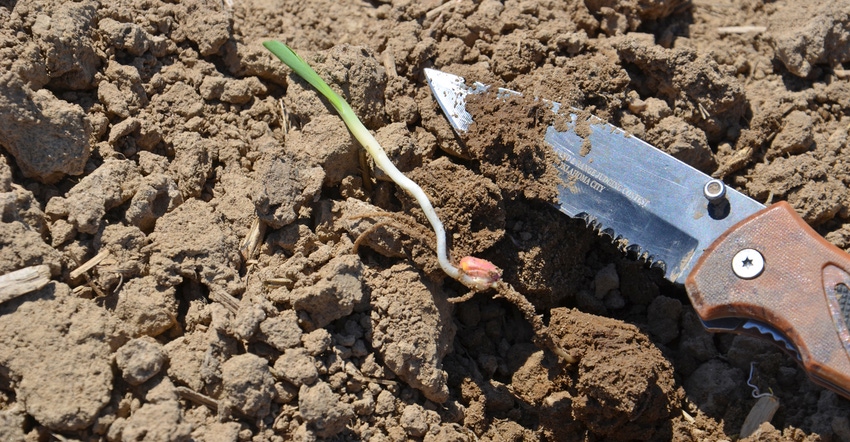
You’ve spent days getting your planter ready for spring. How much time should you spend in the field evaluating its performance?
John Mick, a field agronomist for Pioneer in south-central Nebraska, says you ought to spend as much time as it takes to be confident that your planter is performing as well as it can. That means getting off the tractor occasionally and digging, too, not just relying on information relayed by monitors in the cab.
“You’ve got to keep the human element in the equation,” Mick says. “You are the decision-maker and the one that makes things work.”
Here are five areas to check:
1. Residue wheels. Mick starts here when setting a planter to operate in the field. “You want the residue cleaning system to remove enough residue so you’re not getting hairpinning,” he says. “Hairpinning leads to seeds planted too shallow or without good seed-to-soil contact. But you also don’t want to scrape off too much and plant into wetter soil. If residue wheels are throwing up rooster tails of soil, you’re running too deep.”
Mick believes investing in automated systems that allow you to adjust the residue cleaning units is a wise choice. It’s safer for you as the operator, and also more convenient.
2. Down pressure. Some operators are going too far using automatic down-pressure systems to eliminate row unit bounce, Mick believes. “It’s OK to have a little bit of row unit movement,” he says. “If you apply too much down pressure for the soil and conditions, you risk sidewall compaction, which can result in hatchet roots in corn.”
3. Open air pockets in seed trench. There can be many causes, but the result is usually the same — a seedling that never emerges. “The best way to find these is to get off and dig behind the planter,” he says. “The human element really comes in here. You need to look for them.”
To make sure you find air pockets if they exist, dig forward in the seed trench instead of digging straight down from the top, he advises. If you dig straight down, you may collapse the trench and never see them.
4. Seed-to-soil contact. This is where seed firmers can be a huge help, Mick says. The seed needs good contact with soil within the seed trench for germination and emergence to happen smoothly.
5. Planting depth. Lots of field trial data plus experience indicates that 2 inches plus or minus a quarter inch is a good target for corn planting depth, Mick says. However, that can vary with conditions.
“If you’re on the fence about how deep to go, I advise erring on the side of deeper rather than shallower,” Mick says. He notes that corn planted too shallow can develop all sorts of rooting problems, which can add up to big challenges throughout the season.
About the Author(s)
You May Also Like




